2018-03-08 - Nº 149

Editorial
Esta é a Newsletter Nº 149 que se apresenta com o mesmo formato que as anteriores. Se gostar da Newsletter partilhe-a!
Todas as Newsletters encontram-se indexadas no link.
Esta Newsletter tem os seguintes tópicos:
Faz anos hoje que nascia, em 1879, Otto Hahn. Este Químico/físico alemão juntamente com o radio-químico Fritz Strassmann, ficou conhecido pela descoberta da fissão nuclear. Ele recebeu o Prêmio Nobel de Química em 1944 e partilhou o Prêmio Enrico Fermi em 1966 com Strassmann e Lise Meitner. O elemento 105 carrega o nome hahnium em reconhecimento do seu trabalho.
Faz igualmente anos hoje que nascia, em 1824, John Elder. Este engenheiro escocês, assistido por W.J.M. Rankine, desenvolveu o composto de motores a vapor (1854), dividindo a expansão do vapor em dois cilindros, de modo que cada um se deslocasse através de um intervalo menor de temperaturas e pressões que melhoraram significativamente a eficiência do combustível. O S.S. Brandon navegou em Julho de 1854 com seu primeiro motor deste tipo, que usou menos um terço do carvão do que era necessário antes. Elder continuou a melhorar os seus projectos para serem ainda mais económicos. Como resultado, seu negócio de engenharia no Clyde em Glasgow, na Escócia, continuou a florescer, com mais de 4.000 trabalhadores. Entre 1853 e 1867, a sua empresa submeteu catorze importantes patentes, incluindo um motor de expansão quádrupla (1862).
Faz também anos hoje que nascia, em 1900, Howard H. Aiken. Este Matemático norte-americano inventou o Harvard Mark I, precursor do moderno computador digital electrónico. Enquanto estudante de pós-graduação e instrutor da Universidade de Harvard, a pesquisa de Aiken conduziu-o a um sistema de equações diferenciais que só poderia ser resolvido usando técnicas numéricas, pelo qual ele começou a planear o grande computador. A sua ideia era usar uma adaptação da máquina de cartões perfurados da Hollerith. Quando finalmente construído, (1943) pesava 35 toneladas, tinha 500 milhas de fio e podia calcular até 23 casas significativas. Tinha 72 registos de armazenamento e unidades centrais para realizar a multiplicação e a divisão. Era controlado por uma sequência de instruções em fitas de papel perfurado e usava cartões perfurados para inserir dados e produzir os resultados.
Faz igualmente anos hoje que nascia, em 1902, Tom Blake. Este norte-americano foi o inventor da prancha de base oca. Após a sua primeira prancha oca experimental em 1926, as suas inovadoras pranchas de surf / paddle de núcleo oco dominaram o mundo do surf até o final da década de 1940. Tornou-se equipamento de salvação padrão no primeiro corpo de guarda-vidas da Califórnia. Os projectos adiantados da prancha de surf consistiram em placas de madeira maciças que remontam aos havaianos antigos, estes quadros novos e mais claros foram um sucesso imediato e tornaram-se extremamente importantes na evolução da prancha de surf moderna. Na década de 1930, ele fez o primeiro grande avanço de design com a invenção de barbatanas.
Por fim, faz anos hoje que nascia, em 1924, Georges Charpak. Este físico polaco-francês recebeu o Prémio Nobel de Física em 1992 pela sua invenção e desenvolvimento de detectores de partículas subatómicas, em particular a câmara proporcional multi-fios, um avanço na técnica para explorar as partes mais íntimas da matéria. Como os físicos de partículas concentraram seu interesse em interacções de partículas muito raras, que muitas vezes revelam os segredos das partes internas da matéria, às vezes apenas uma interacção de partículas em um bilião é aquela procurada. Charpak substituiu agora métodos fotográficos inadequados com componentes electrónicos modernos que ligavam o detector directamente a um computador.
Esta semana ficámos a saber que o sistema de energia continental europeu (CE) - uma grande área sincronizada que se estende da Espanha para a Turquia e da Polónia para a Holanda; abrangendo 25 países - está com um desvio contínuo da frequência do sistema do valor médio de 50 Hz, e isto desde meados de Janeiro de 2018. Este desvio provoca alterações nos valores de equipamentos que usam esta frequência para o calculo do tempo. Percebeu-se que este desvio está a ser provocado numa área de controlo chamada Sérvia, Macedónia, Montenegro (bloco SMM) e, mais especificamente, Kosovo e Sérvia. Os desvios de energia levaram a uma ligeira diminuição na média de frequência eléctrica. Este desvio de frequência médio, que nunca aconteceu de forma semelhante no sistema CE Power, deve cessar. A quantidade de energia em falta actualmente é de 113 GWh.
Na Newsletter desta semana apresentamos diversos projetos de maker assim como alguns modelos 3D que poderão ser úteis.
 João Alves ([email protected])
João Alves ([email protected])
O conteúdo da Newsletter encontra-se sob a licença  Creative Commons Attribution-NonCommercial-ShareAlike 4.0 International License.
Creative Commons Attribution-NonCommercial-ShareAlike 4.0 International License.
Novidades da Semana

Continuing frequency deviation in the Continental European Power System originating in Serbia/Kosovo: Political solution urgently needed in addition to technical
"The Continental European (CE) Power System -a large synchronized area stretching from Spain to Turkey and from Poland to Netherlands; encompassing 25 countries- is experiencing a continuous system frequency deviation from the mean value of 50 Hz, and this since mid of January 2018. The power deviations are originating from the control area called Serbia, Macedonia, Montenegro (SMM block) and specifically Kosovo and Serbia. The power deviations have led to a slight decrease in the electric frequency average. This average frequency deviation, that has never happened in any similar way in the CE Power system, must cease. The missing energy amounts currently to 113 GWh. The question of who will compensate for this loss has to be answered." [...]
Outras Notícias
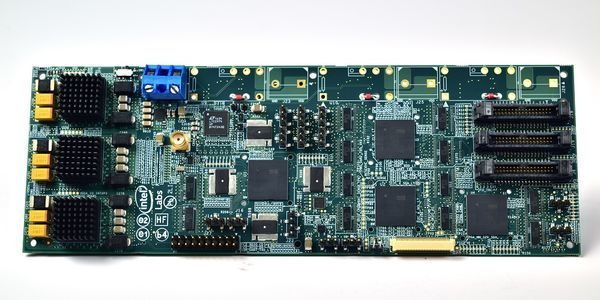
Intel Creates Neuromorphic Research Community to Advance ‘Loihi’ Test Chip
"This week, we hosted the Neuro Inspired Computational Elements (NICE) workshop at our Oregon campus with the goal of bringing together researchers from different scientific disciplines to discuss and explore the development of next-generation computing architectures, including neuromorphic computing. Today at the workshop, we provided an update on Intel’s neuromorphic research and announced a collaborative research initiative to encourage experimentation with our Loihi neuromorphic test chip. Here’s a status of our neuromorphic computing efforts and details on this new research community. Where We Are Fabrication and packaging of our Loihi test chip was completed in early November, and we began power-on and validation. We were pleased to find 100 percent functionality, a wide operating margin and few bugs overall. Our small-scale demonstrations that we had prepared on our emulator worked as expected on the real silicon, though, of course, running orders of magnitude faster." [...]
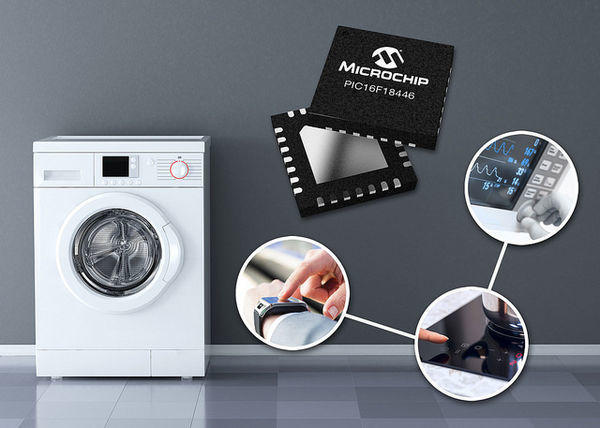
Digital Control Meets Intelligent Analog to Streamline Design
"Simplify development of traditionally complex designs with new PIC® and AVR® families featuring Core Independent Peripherals and Intelligent Analog Whether it’s used as an initial introduction into embedded development, the main controller of a connected application or as an attach component to offload tasks from a larger system, the role of the 8-bit microcontroller (MCU) continues to expand. While inherently simple to understand and implement, additional hardware and software tools, such as Core Independent Peripherals (CIPs), Intelligent Analog and MPLAB® Code Configurator, enable greater processing power while decreasing the amount of code, power consumption and design effort needed to get to market quickly. Microchip Technology Inc. (NASDAQ: MCHP) has introduced two new microcontroller families designed with customer innovation in mind. The new PIC16F18446 family of microcontrollers are ideal components for use in sensor nodes. Designed with flexibility in mind, the PIC16F18446 and its integrated Analog-to-Digital Converter with Computation (ADC2) runs from 1.8V to 5V, providing compatibility with a majority of both analog output sensors and digital sensors. The 12-bit ADC2 does its filtering autonomously, providing more accurate analog sensor readings and ultimately higher-quality end-user data." [...]
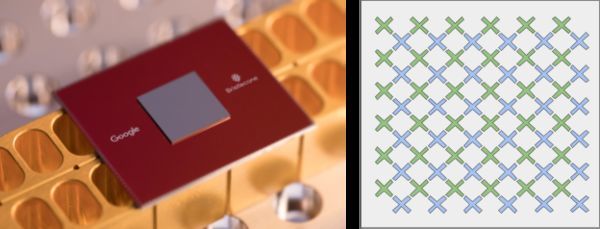
A Preview of Bristlecone, Google's New Quantum Processor
"The goal of the Google Quantum AI lab is to build a quantum computer that can be used to solve real-world problems. Our strategy is to explore near-term applications using systems that are forward compatible to a large-scale universal error-corrected quantum computer. In order for a quantum processor to be able to run algorithms beyond the scope of classical simulations, it requires not only a large number of qubits. Crucially, the processor must also have low error rates on readout and logical operations, such as single and two-qubit gates. Today we presented Bristlecone, our new quantum processor, at the annual American Physical Society meeting in Los Angeles. The purpose of this gate-based superconducting system is to provide a testbed for research into system error rates and scalability of our qubit technology, as well as applications in quantum simulation, optimization, and machine learning." [...]

SpaceX successfully launches 50th Falcon 9 mission
"SpaceX has launched its 50th Falcon 9 rocket mission, and on board is its largest ever geostationary satellite payload, a Hispasat unit that’s around the size of a city bus. The launch took off from Cape Canaveral in Florida this morning and proceeded as planned, delivering Hispasat 30W-6 to its target geostationary transfer orbit. The Standish satellite weighed 6 metric tons and sets a new record for the space company for a satellite of this kind. This marks a big milestone for the Falcon 9 rocket, which began service for SpaceX in 2010 with its first version. SpaceX also recently launched its Falcon Heavy for the first time, and is looking ahead to its next-generation launch craft: The BFR or sometime colloquially called the ‘big f*cking rocket.’" [...]

NASA Juno finds Jupiter's Jet-Streams Are Unearthly
"Data collected by NASA's Juno mission to Jupiter indicate that the atmospheric winds of the gas-giant planet run deep into its atmosphere and last longer than similar atmospheric processes found here on Earth. The findings will improve understanding of Jupiter's interior structure, core mass and, eventually, its origin. Other Juno science results released today include that the massive cyclones that surround Jupiter's north and south poles are enduring atmospheric features and unlike anything else encountered in our solar system. The findings are part of a four-article collection on Juno science results being published in the March 8 edition of the journal Nature. "These astonishing science results are yet another example of Jupiter's curve balls, and a testimony to the value of exploring the unknown from a new perspective with next-generation instruments.Juno's unique orbit and evolutionary high-precision radio science and infrared technologies enabled these paradigm-shifting discoveries," said Scott Bolton, principal investigator of Juno from the Southwest Research Institute, San Antonio. "Juno is only about one third the way through its primary mission, and already we are seeing the beginnings of a new Jupiter."" [...]
Ciência e Tecnologia
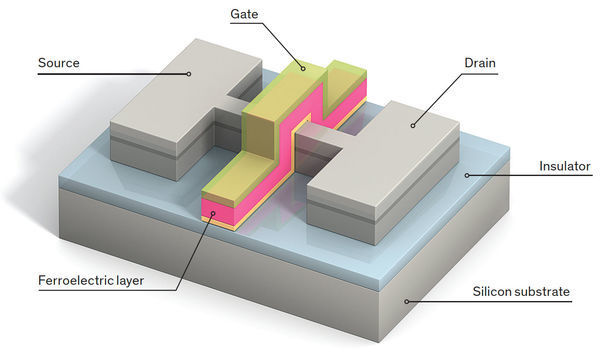
Chipmakers Test Ferroelectrics as a Route to Ultralow-Power Chips
"Academics have high hopes for ferroelectric materials. Adding a single layer of these materials, which have unusual electrical properties, to today’s transistors could radically decrease the power consumption of chips. But as engineers presented the latest research on ferroelectrics at the IEEE International Electron Devices Meeting (IEDM), in San Francisco in December, the mood in the room fluctuated between excitement and doubt. Many in industry are skeptical about the benefits of ferroelectrics. Still, the IEDM meeting made it clear that semiconductor companies are now paying attention. Researchers from GlobalFoundries presented data on the performance of ferroelectric-frosted transistors made using their 14-nanometer manufacturing technology." [...]
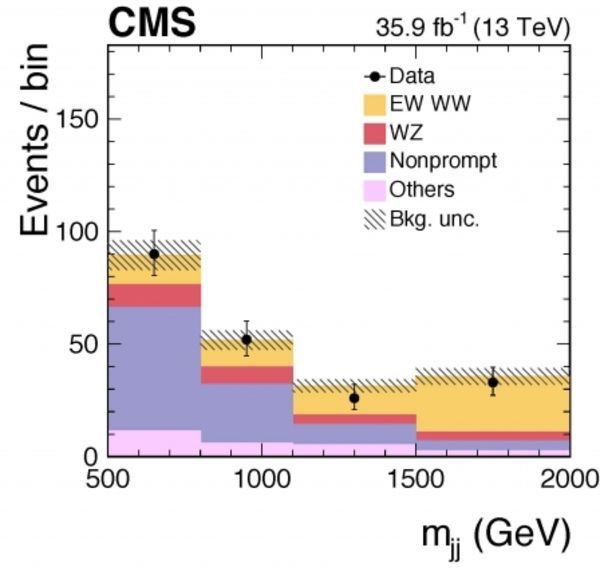
MIT physicists observe electroweak production of same-sign W boson pairs
"With the aid of the Compact Muon Solenid detector at the Large Hadron Collider, a Laboratory for Nuclear Science-led group seeks to further understand the building blocks of matter. In research conducted by a group led by MIT Laboratory for Nuclear Science researcher and associate professor of physics Markus Klute, electroweak productions of same-sign W boson pairs were observed, the first such observation of its kind and a milestone toward precision testing of vector boson scattering (W and Z bosons) at the Large Hadron Collider (LHC). The LHC at CERN in Geneva, Switzerland, was proposed in the 1980s as a machine to either find the Higgs boson or discover yet unknown particles or interactions. This idea, that the LHC would be able to make a discovery, whatever that might be, is called by theorists No-lose Theorem, and is connected to probing the scattering of W boson pairs at energies above 1 teraelectronvolt (TeV). In 2012, only two years after the first high-energy collision at the LHC, this proposal paid huge dividends when the Higgs boson was discovered by the ATLAS and Compact Muon Solenid (CMS) collaborations. According to CERN, the CMS detector at the LHC utilizes a massive solenoid magnet to study everything from the Higgs boson to dark matter to the Standard Model." [...]

Finding the Needle in a Digital Haystack
"Surveillance cameras. Smart thermostats. Baby monitors. Home automation systems. Self-driving cars. In recent years, tens of millions of such “edge devices” have been connected to the Internet." [...]
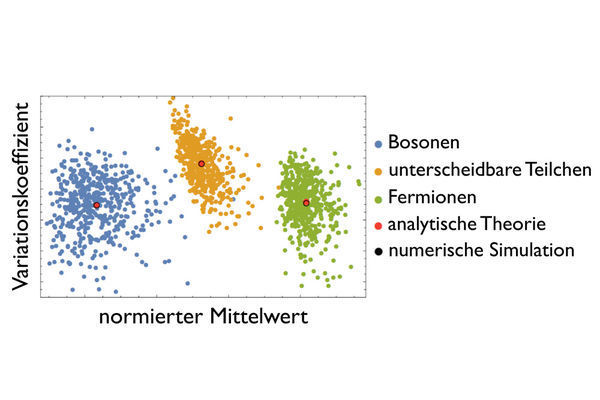
Developing reliable quantum computers
"Quantum computers may one day solve algorithmic problems which even the biggest supercomputers today can’t manage. But how do you test a quantum computer to ensure it is working reliably? Depending on the algorithmic task, this could be an easy or a very difficult certification problem. An international team of researchers has taken an important step towards solving a difficult variation of this problem, using a statistical approach developed at the University of Freiburg. The results of their study are published in the latest edition of Nature Photonics. Their example of a difficult certification problem is sorting a defined number of photons after they have gone through a defined arrangement of several optical elements." [...]

New graphene laser technique opens door for edible electronics
"“Laser-Induced Graphene by Multiple Lasing: Toward Electronics on Cloth, Paper, and Food” Electronics, the lifeblood of the modern world, could soon be part of our daily diet. In a study appearing in ACS Nano, scientists report that they have developed a way to write graphene patterns onto virtually any surface including food. They say the new technique could lay the groundwork for the edible electronics capable of tracing the progression of foods from farm to table, as well as detecting harmful organisms that can cause gastric distress. Graphene is composed of a single layer of carbon atoms arranged in a honeycomb pattern. It is stronger than steel, thinner than a human hair and more conductive than copper, making an ideal building block for the next generation of compact, smart electronics. Several years ago, James M. Tour and colleagues heated the surface of an inexpensive plastic with a laser in air to create something called laser-induced graphene (LIG)." [...]
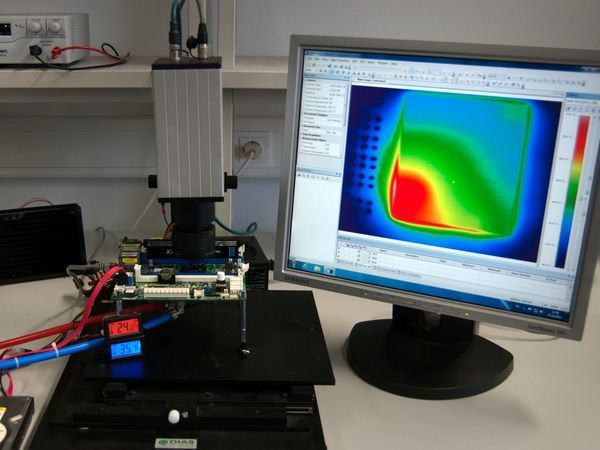
Smart Heat Control of Microchips
"Miniaturization of computer chips is a perfect gateway for attacks by hackers: Microchips are highly sensitive and might be destroyed physically by specific overloading. Researchers of Karlsruhe Institute of Technology have now demonstrated that monitoring of the processors’ thermal patterns allows conclusions to be drawn with respect to manipulative control commands. This might give rise to a new generation of computer chips with integrated intelligent monitoring systems that self-adapt to new threats. Technological progress in the electronics sector, such as higher speeds, reduced costs, and smaller sizes, result in entirely new possibilities of automation and industrial production, without which “Industry 4.0” would not be feasible. In particular, miniaturization advanced considerably in the last years. Meanwhile, physical flow of a few electrons is sufficient to execute a software." [...]

Modified, 3D-printable alloy shows promise for flexible electronics, soft robots
"Researchers in Oregon State University’s College of Engineering have taken a key step toward the rapid manufacture of flexible computer screens and other stretchable electronic devices, including soft robots. The advance by a team within the college’s Collaborative Robotics and Intelligent Systems Institute paves the way toward the 3D printing of tall, complicated structures with a highly conductive gallium alloy. Researchers put nickel nanoparticles into the liquid metal, galinstan, to thicken it into a paste with a consistency suitable for additive manufacturing. “The runny alloy was impossible to layer into tall structures,” said Yiğit Mengüç, assistant professor of mechanical engineering and co-corresponding author on the study. “With the paste-like texture, it can be layered while maintaining its capacity to flow, and to stretch inside of rubber tubes. We demonstrated the potential of our discovery by 3D printing a very stretchy two-layered circuit whose layers weave in and out of each other without touching.” Findings were recently published in Advanced Materials Technologies." [...]
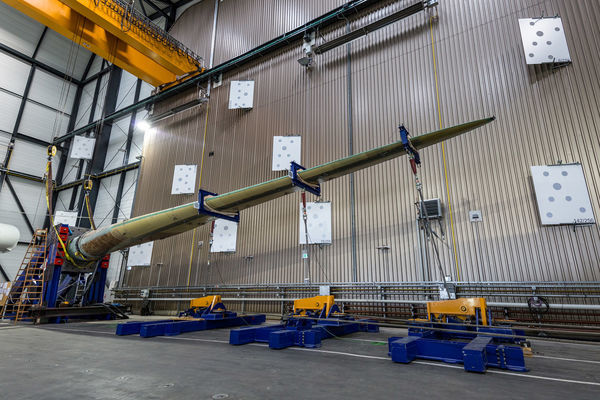
Intelligent rotor blade optimizes wind energy utilization
"The share of the overall electricity market made up by wind energy continues to grow year after year. The giant rotor blades are one central part of a turbine. In the “SmartBlades” project, the Fraunhofer Institute for Wind Energy Systems IWES and its partners developed a rotor blade, which, thanks to an innovative bend-twist coupling, is able to make more efficient use of large fluctuations in wind strength. In the follow-up project “SmartBlades2”, the concept will undergo experimental tests using a demonstrator. More than 28,000 wind turbines with a total output of 50 gigawatts are currently in operation in Germany: This equates to a 12.3 percent share of the total electricity production in Germany in 2016. This figure places the German wind energy sector at the top of the European league table, as confirmed by the German Wind Energy Association’s data." [...]
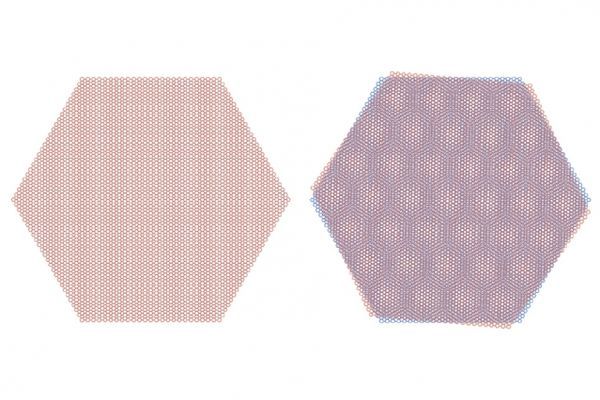
Insulator or superconductor? Physicists find graphene is both
"When rotated at a "magic angle," graphene sheets can form an insulator or a superconductor. It’s hard to believe that a single material can be described by as many superlatives as graphene can. Since its discovery in 2004, scientists have found that the lacy, honeycomb-like sheet of carbon atoms — essentially the most microscopic shaving of pencil lead you can imagine — is not just the thinnest material known in the world, but also incredibly light and flexible, hundreds of times stronger than steel, and more electrically conductive than copper. Now physicists at MIT and Harvard University have found the wonder material can exhibit even more curious electronic properties. In two papers published today in Nature, the team reports it can tune graphene to behave at two electrical extremes: as an insulator, in which electrons are completely blocked from flowing; and as a superconductor, in which electrical current can stream through without resistance. Researchers in the past, including this team, have been able to synthesize graphene superconductors by placing the material in contact with other superconducting metals — an arrangement that allows graphene to inherit some superconducting behaviors." [...]
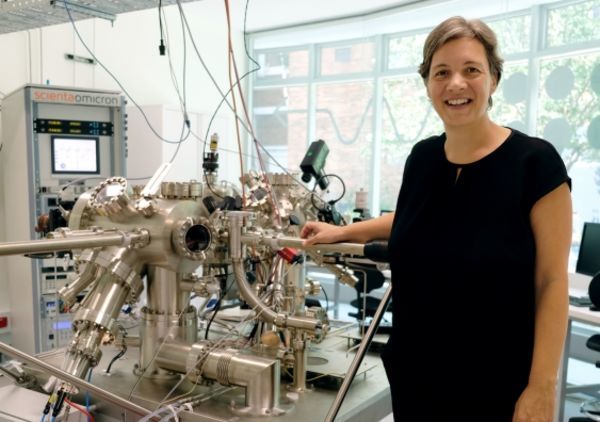
Seeing is believing - precision atom qubits achieve major milestone
"The unique Australian approach of creating quantum bits from precisely positioned individual atoms in silicon is reaping major rewards, with two of these atom qubits made to “talk” to each other for the first time. The unique Australian approach of creating quantum bits from precisely positioned individual atoms in silicon is reaping major rewards, with UNSW Sydney-led scientists showing for the first time that they can make two of these atom qubits “talk” to each other. The team – led by UNSW Scientia Professor Michelle Simmons, Director of the Centre of Excellence for Quantum Computation and Communication Technology, or CQC2T – is the only group in the world that has the ability to see the exact position of their qubits in the solid state. Simmons’ team create the atom qubits by precisely positioning and encapsulating individual phosphorus atoms within a silicon chip. Information is stored on the quantum spin of a single phosphorus electron. The team’s latest advance – the first observation of controllable interactions between two of these qubits – is published in the journal Nature Communications." [...]

Ethereum's smart contracts are full of holes
"Blockchain-powered computer programs promise to revolutionize the digital economy, but new research suggests they’re far from secure. Computer programs that run on blockchains are shaking up the financial system. But much of the hype around what are called smart contracts is just that. It’s a brand-new field. Technologists are just beginning to figure out how to design them so they can be relied on not to lose people’s money, and—as a new survey of Ethereum smart contracts illustrates—security researchers are only now coming to terms with what a smart-contract vulnerability even looks like. This piece appears in our twice-weekly newsletter Chain Letter, which covers the world of blockchain and cryptocurrencies." [...]
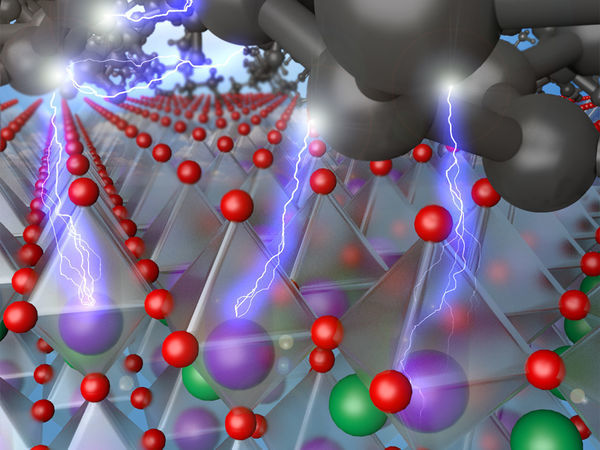
New transistor concept, solar cell included
"ICN2 researchers have developed a novel concept in transistor technology: a two-in-one power source plus transistor device that runs on solar energy. Published in Advanced Functional Materials and currently trending in the Wiley-VCH “Hot Topics” list, lead author Amador Pérez-Tomás is calling it the “solaristor”. Transistors are everywhere in modern electronic devices. They are in your phones, your radios, your computers… Where wires transport electricity from A to B, transistors can modulate the current between high and low states which, translated into sequences of 1s and 0s, is the basis of the age of information. But your phone needs more than transistors to work; it also needs an energy source. All electronic devices are connected up to a battery of some kind, requiring cables, sometimes complex systems and a lot of space –the battery is the single biggest component of any mobile phone." [...]
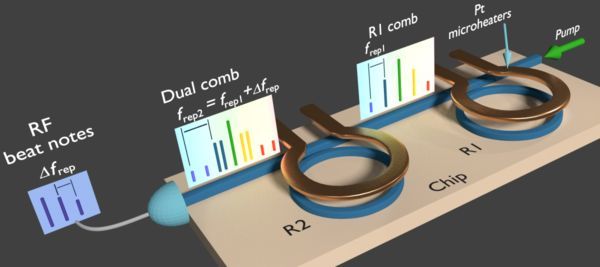
Dual Frequency Comb Generated on a Single Chip Using a Single Laser
"Columbia Engineers are the first to miniaturize dual-frequency combs by putting two frequency comb generators on a single millimeter-sized silicon-based chip; could lead to low-cost, portable sensing and spectroscopy in the field in real-time In a new paper published today in Science Advances, researchers under the direction of Columbia Engineering Professors Michal Lipson and Alexander Gaeta have miniaturized dual-frequency combs by putting two frequency comb generators on a single millimeter-sized chip. “This is the first time a dual comb has been generated on a single chip using a single laser,” says Lipson, Higgins Professor of Electrical Engineering. A frequency comb is a special kind of light beam with many different frequencies, or “colors," all spaced from each other in an extremely precise way. When this many-color light is sent through a chemical specimen, some colors are absorbed by the specimen's molecules. By looking at which colors have been absorbed, one can uniquely identify the molecules in the specimen with high precision. This technique, known as frequency-comb spectroscopy, enables molecular fingerprinting and can be used to detect toxic chemicals in industrial areas, to implement occupational safety controls, or to monitor the environment." [...]
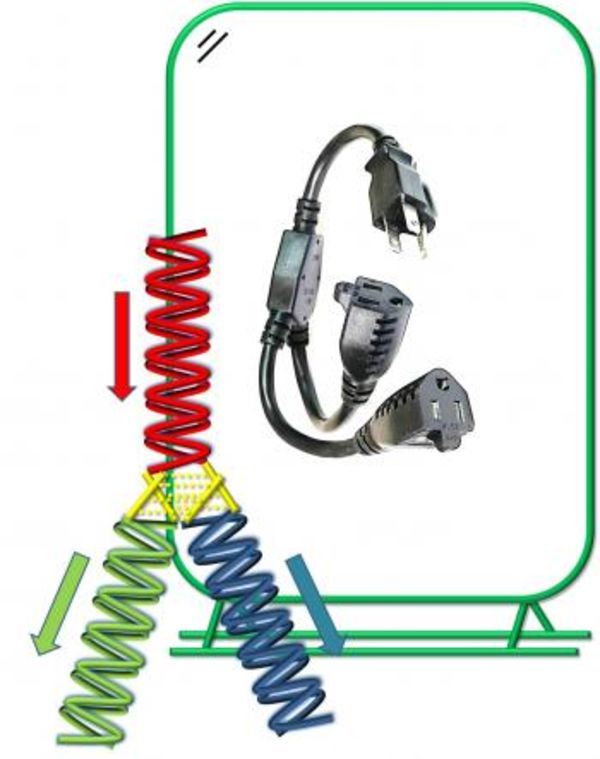
Going with the DNA flow: Molecule of life finds new uses in microelectronics
"For sheer versatility, there’s no molecule quite like DNA. The iconic double helix carries the genetic blueprint for living forms ranging from single-celled organisms to human beings. Recently, researchers have found that DNA’s remarkable properties of self-assembly and its ability to conduct electrical charge over considerable distance make it ideally suited for myriad applications, including tiny electronic circuits and computing devices, nanorobots and new advances in photonics. Researchers at Arizona State University, in collaboration with New York University and Duke University, have recently designed, created and tested a DNA circuit capable of splitting and combining current, much like an adapter that can connect multiple appliances to a single wall outlet. Professor Nongjian “N.J.” Tao, a co-author of the new study, has been working on refining the ability of DNA to more stably and efficiently transport charge, an essential hurdle to clear on the path to a new generation of biologically-based devices. “The ability of DNA to transport electrical charge has been under investigation for some time,” said Tao, who directs the Biodesign Center for Bioelectronics and Biosensors." [...]
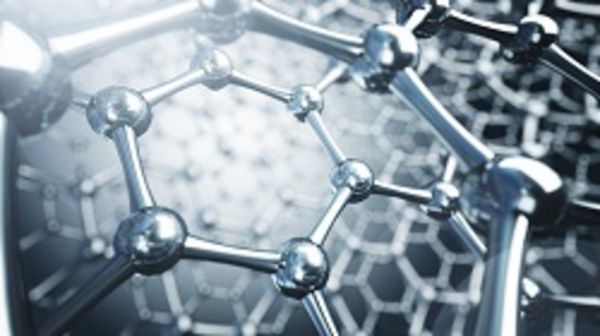
Using graphene for flawless tunnelling accelerometers
"An ERC Proof of Concept grant is enabling Aalto University to work on a novel concept for a tunnelling accelerometer using graphene’s unique properties. If successful, the project could appeal to industries producing high-precision applications. Accelerometers are used in a wide range of applications, from navigation systems in aircrafts to motion sensing in cars and portable electronic devices. But the most demanding applications require high-resolution accelerometers which are both very large and very expensive to manufacture. For such applications, which include the likes of microgravity measurements, acoustic measurements and seismology, the use of tunnelling accelerometers could seem self-evident. A giant step ahead of their conventional counterparts, they can be produced at much lower cost whilst providing unmatched precision." [...]
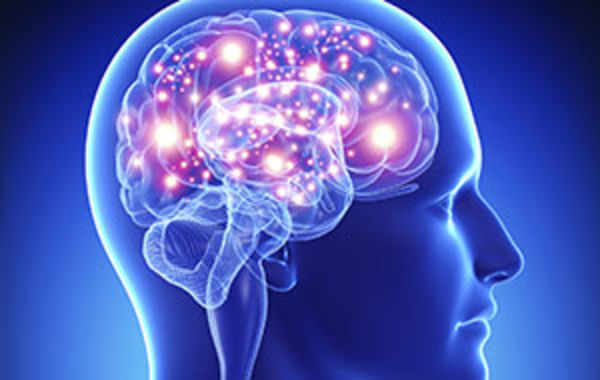
Understanding the smallest brain circuits
"Case Western Reserve researchers reveal how anatomically distinct microcircuit brain networks suppress each other, compete and collaborate Researchers at Case Western Reserve University have found a previously unseen pattern among the rapid-firing neurons inside the brain, one that reveals how distinct networks located in specific areas compete and even suppress each other. Roberto Fernández Galán, an assistant professor of electrical engineering and computer science at the university’s School of Engineering, and a team of undergraduate researchers at Case Western Reserve have been recording the electrical activity of hundreds of neurons as they fire inside the brain of a mouse model—for up to half an hour at a time. “Neurons are highly active spontaneously, so 30 minutes is actually a very long time,” Galán said. For decades, neuroscientists examined the activity at shorter time-scales—tens of milliseconds, he said—and their aim was limited to observing some neurons firing together at times and others not. However, Galán and his lab focused on the interactions between neurons at multiple time-scales from milliseconds to minutes. “This is our main contribution,” he said." [...]
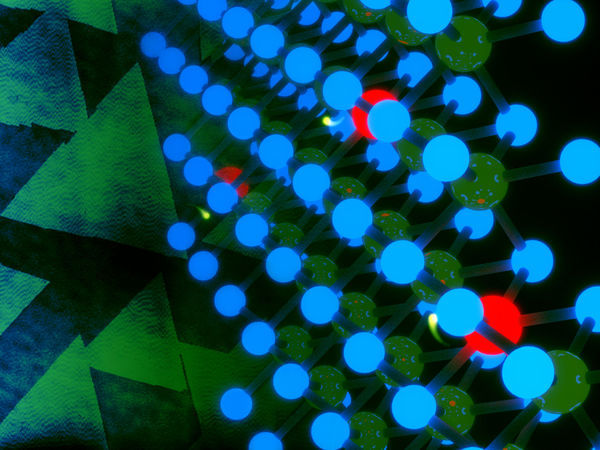
The fine-tuning of two-dimensional materials
"A new understanding of why synthetic 2-D materials often perform orders of magnitude worse than predicted was reached by teams of researchers led by Penn State. They searched for ways to improve these materials' performance in future electronics, photonics, and memory storage applications. Two-dimensional materials are films only an atom or two thick. Researchers make 2-D materials by the exfoliation method — peeling a slice of material off a larger bulk material — or by condensing a gas precursor onto a substrate. The former method provides higher quality materials, but is not useful for making devices. The second method is well established in industrial applications, but yields low performance 2-D films." [...]

Mapping nanoscale chemical reactions inside batteries in 3-D
"Researchers from the University of Illinois at Chicago and Lawrence Berkeley National Laboratory have developed a new technique that lets them pinpoint the location of chemical reactions happening inside lithium-ion batteries in three dimensions at the nanoscale level. Their results are published in the journal Nature Communications. “Knowing the precise locations of chemical reactions within individual nanoparticles that are participating in those reactions helps us to identify how a battery operates and uncover how the battery might be optimized to make it work even better,” said Jordi Cabana, associate professor of chemistry at UIC and co-corresponding author on the paper. As a battery charges and discharges, its electrodes — the materials where the reactions that produce energy take place — are alternately oxidized and reduced. The chemical pathways by which these reactions take place help determine how quickly a battery becomes depleted. Tools available to study these reactions can only provide information on the average composition of electrodes at any given point in time." [...]

Controlled coupling of light and matter
"Researchers from Würzburg and London have built the foundations for a new field of nano-optics: they have succeeded in controlling the coupling of light and matter at room temperature. Publishing in a journal like Science Advances usually heralds a particularly exciting innovation. Now, physicists from the Julius-Maximilians-Universität Würzburg (JMU) in Germany and Imperial College London in the UK are reporting controlled coupling of light and matter at room temperature. This achievement is particularly significant as it builds the foundations for a realization of practical photonic quantum technologies. Indeed, while many demonstrations of optical quantum processes require cryogenic temperatures to protect the quantum states, the present work elevates the quantum processes to room temperature and introduces controllability – both vital elements of quantum technologies such as quantum computers, which to a certain extent "calculate with light" and are conceivably many times more powerful than existing computers. Emitted photons are trapped and re-absorbed A light particle (photon) is generated when, for example, an exited molecule or a quantum dot returns to its low-energy ground state." [...]
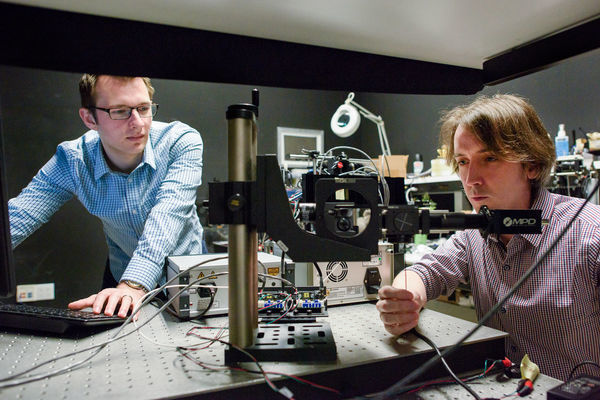
Stanford researchers develop technique to see objects hidden around corners
"Someday your self-driving car could react to hazards before you even see them, thanks to a laser-based imaging technology being developed by Stanford researchers that can peek around corners. A driverless car is making its way through a winding neighborhood street, about to make a sharp turn onto a road where a child’s ball has just rolled. Although no person in the car can see that ball, the car stops to avoid it. This is because the car is outfitted with extremely sensitive laser technology that reflects off nearby objects to see around corners. This scenario is one of many that researchers at Stanford University are imagining for a system that can produce images of objects hidden from view. They are focused on applications for autonomous vehicles, some of which already have similar laser-based systems for detecting objects around the car, but other uses could include seeing through foliage from aerial vehicles or giving rescue teams the ability to find people blocked from view by walls and rubble." [...]

Researchers sew atomic lattices seamlessly together
"Joining different kinds of materials can lead to all kinds of breakthroughs. It’s an essential skill that allowed humans to make everything from skyscrapers (by reinforcing concrete with steel) to solar cells (by layering materials to herd electrons). In electronics, joining different materials produces heterojunctions – the most fundamental components in solar cells, LEDs and computer chips. The smoother the seam between two materials, the more easily electrons flow across it, which is essential for how well electronic devices function. But they’re made up of crystals – rigid lattices of atoms – and they don’t take kindly to being mashed together. In a study published March 8 in Science, Cornell University and University of Chicago scientists revealed a technique to “sew” two patches of crystals seamlessly together to create atomically thin fabrics." [...]

Controlling skyrmions with lasers
"A skyrmion is a collection of electron spins that look like a vortex in certain magnetic materials. Skyrmions can exist individually or in patterns referred to as lattices. Named after British physicist Tony Skyrme who first theorized the existence of their elementary-particle counterparts in 1962, skyrmions have attracted attention for their potential in being used in so-called “spintronic” devices, which would use the spin rather than the charge of electrons, thus becoming significantly more miniaturized and energy-efficient. Most interest has been focused on memory-storage technologies. Skyrmions can be rather stable and require very little energy for writing or erasing them: some studies have shown that creating and annihilating skyrmions could be almost 10,000 times more energy-efficient than conventional data-storage devices. However, this would require a fast and reliable way of controlling and manipulating individual skyrmions." [...]
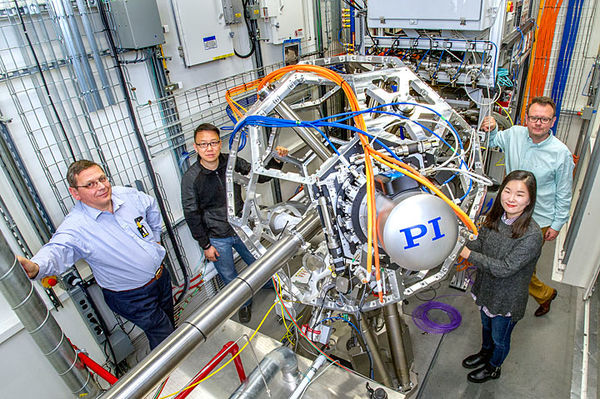
Converting CO2 into Usable Energy
"Scientists show that single nickel atoms are an efficient, cost-effective catalyst for converting carbon dioxide into useful chemicals Imagine if carbon dioxide (CO2) could easily be converted into usable energy. Every time you breathe or drive a motor vehicle, you would produce a key ingredient for generating fuels. Like photosynthesis in plants, we could turn CO2 into molecules that are essential for day-to-day life. Now, scientists are one step closer. Researchers at the U.S. Department of Energy’s (DOE) Brookhaven National Laboratory are part of a scientific collaboration that has identified a new electrocatalyst that efficiently converts CO2 to carbon monoxide (CO), a highly energetic molecule. Their findings were published on Feb. 1 in Energy & Environmental Science." [...]

MIPT physicists tune a spin diode
"A team of physicists at MIPT has offered a new design of a spin diode, placing the device between two kinds of antiferromagnetic materials. By adjusting the orientation of their antiferromagnetic axes, it is possible to change the resistance and the resonant frequency of the diode. In addition, this approach triples the range of frequencies on which the device can rectify alternating current. At the same time, the sensitivity of the spin diode is comparable to that of its semiconductor analogs. The paper was published in Physical Review B. “Conventional spin diodes with free ferromagnetic layers only operate on predetermined frequencies that don’t exceed 2-4 gigahertz,” explains senior researcher Konstantin Zvezdin of the Laboratory of Magnetic Heterostructure Physics and Spintronics for Energy-Efficient Information Technologies at MIPT." [...]
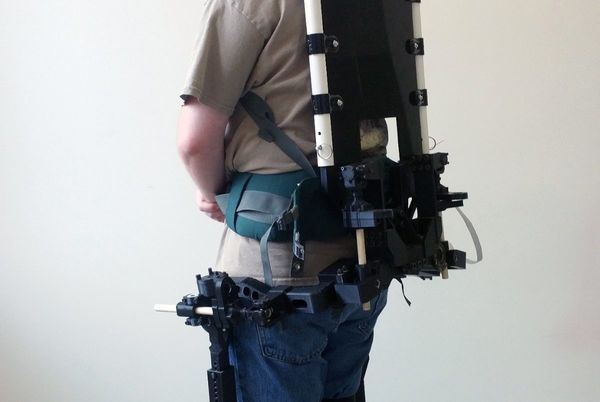
Mechanical engineers collaborate in exploration of robotic options for farmers
"Farmers are among America’s oldest workers. According to the U.S. Department of Agriculture's 2012 Census of Agriculture, in the past 30 years, the average age of U.S. farmers has grown from 50 years to 58 years old. Two National Science Foundation grants of approximately $1.5 million, awarded to Virginia Tech researchers, will bring robotics and technology assistance to one of the largest groups of workers in Virginia. The research goal is to combine technologies to provide physical safety and enhance quality of life for Virginia farmers. The first project partners with industry to use robotics to aid farmers with mobility impairments. The Partnership for Innovation grant is a collaborative effort between Virginia Tech’s College of Engineering and the College of Agriculture and Life Sciences, and with community partners, AgrAbility Virginia, a program that assists farmers with illnesses, injuries, or disabilities that are impeding their ability to work safely, effectively, and productively." [...]
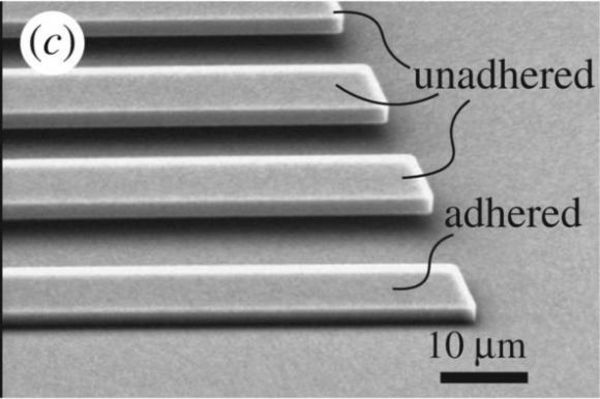
New approach to measuring stickiness could aid micro-device design
"At the scale of microdevices, adhesion is one of the most important forces that engineers need to contend with — Brown University researchers have come up with a new way to measure it. Brown University engineers have devised a new method of measuring the stickiness of micro-scale surfaces. The technique, described in Proceedings of the Royal Society A, could be useful in designing and building micro-electro-mechanical systems (MEMS), devices with microscopic moving parts. At the scale of bridges or buildings, the most important force that engineered structures need to deal with is gravity. But at the scale of MEMS — devices like the tiny accelerometers used in smartphones and Fitbits — the relative importance of gravity decreases, and adhesive forces become more important. “The main thing that matters at the microscale is what sticks to what,” said Haneesh Kesari, an assistant professor in Brown’s School of Engineering and coauthor of the new research." [...]
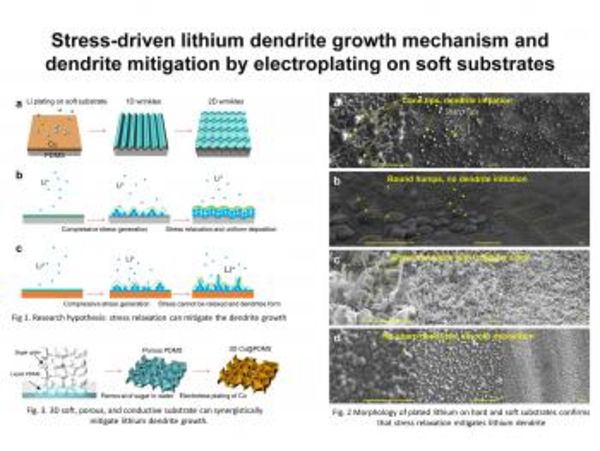
Lithium-related discovery could extend battery life, improve safety
"ASU researchers find new solution for mitigating dendrite growth, which shows promise for all batteries Lithium-metal batteries are among the most promising candidates for high-density energy storage technology in an expanding range of digital “smart” devices and electrical vehicles, but uncontrolled lithium dendrite growth, which results in poor recharging capability and safety hazards, currently tempers their potential. Dendrites are needle-like growths that appear on the surface of lithium metal, which is used as the anode, or negative electrode, of a battery. They induce unwanted side reactions that reduce energy density, and at worst, cause shorting of the electrodes that can lead to fires or explosions. New research from Arizona State University finds that using a 3-D layer of polydimethylsiloxane (PDMS), or silicone, as the substrate of the lithium metal anode can mitigate dendrite formation and both dramatically extend battery life and diminish safety risks. The paper, “Stress-driven lithium dendrite growth mechanism and dendrite mitigation by electroplating on soft substrates,” was published today in Nature Energy. According to Hanqing Jiang, a professor in ASU's School for Engineering of Matter, Transport and Energy, in the Ira A. Fulton Schools of Engineering, and a lead researcher on the paper, the findings have relevance for both lithium-ion and lithium-air batteries, as well as implications for other metal-anode-based batteries." [...]

All power to the proton: researchers make battery breakthrough
"RMIT University researchers have demonstrated for the first time a working rechargeable “proton battery” that could re-wire how we power our homes, vehicles and devices. The rechargeable battery is environmentally friendly, and has the potential, with further development, to store more energy than currently-available lithium ion batteries. Potential applications for the proton battery include household storage of electricity from solar photovoltaic panels, as done currently by the Tesla 'Power wall' which uses lithium ion batteries. With some modifications and scaling up, proton battery technology may also be used for medium-scale storage on electricity grids - - like the giant lithium battery in South Australia -- as well as powering electric vehicles. The working prototype proton battery uses a carbon electrode as a hydrogen store, coupled with a reversible fuel cell to produce electricity. It’s the carbon electrode plus protons from water that give the proton battery it’s environmental, energy and potential economic edge, says lead researcher Professor John Andrews." [...]
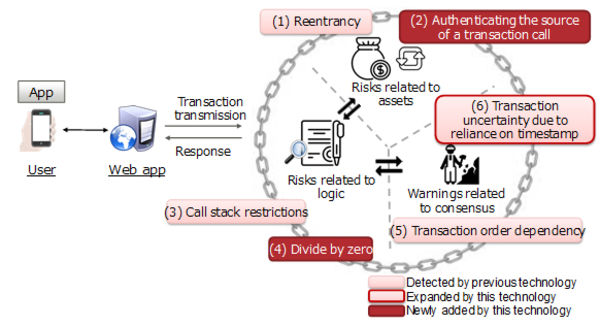
Fujitsu Develops Technology to Verify Blockchain Risks
"Fujitsu Laboratories Ltd. and Fujitsu Research and Development Center Co., Ltd. today announced development of technology that can verify, in advance, risks associated with smart contracts, which are programs that automatically execute transactions on blockchain platforms. The technology also identifies relevant locations in the source code. Blockchain technology, which was developed as the foundation for Bitcoin, is expected to have applications in a variety of fields beyond finance, including real estate and healthcare. Because smart contract risks are directly linked with business losses, however, there have been issues with improving their reliability as a system. Now, Fujitsu Laboratories and Fujitsu Research and Development Center have developed algorithms to identify risk-affected transaction sequences on Ethereum(1), a platform for executing blockchain applications, using symbolic execution technology(2). Using these algorithms, they have developed technology that is able to comprehensively detect six types of risks in smart contracts (figure 1), which have the potential to be overlooked in a manual review, and can then identify the relevant locations in the source code." [...]
Modelos 3D
Com a disponibilidade de ferramentas que permitem dar azo a nossa imaginação na criação de peças 3D e espaços como o thingiverse para as publicar, esta rubrica apresenta alguns modelos selecionados que poderão ser úteis.

Angle Measuring Tool
"Inspired by https://www.thingiverse.com/thing:2143936. Differences:There are rotary grips at both ends of the screws.The slots in the rulers are divided into two sections to improve stability.Rulers are 200 x 24 x 2.5 mm.Grips are 24 mm Ø x 4.3 mm.M4 x 10 mm Hex Screws (4x) and M4 Nuts (4x). " [...]

Customizable Flower Pot - Classic Style
"Spring is coming and there are lots of plants to get started. Here's a customizable flower pot to help. I'm not sure how well PLA really works as flower pot material (it should be fine), but you don't have to actually put real plants in them. Plastic plants - that would seem to be rather appropriate. Easter eggs might work, too. Jelly beans would also be a good choice for the smaller ones." [...]
Projetos Maker
Diversos Projetos interessantes.

Infinity Mirror Clock & Amazing Animation
"INFINITY MIRROR CLOCK We are in a wonderful design that you can offer both as a gift for yourself.Infinity Mirror Clock. Do not you want the mirror you possess to have an endless appearance and be used at the same time hour? We are very happy to share with you this project which is prepared with RGB LEDs which are widely used today. " [...]

Mini Infra-Red Remote Robot Controller Shield For Arduino Nano
"The Mini Infra-Red Remote Robot Controller shield for Arduino Nano is designed to drive mini mobile robots. Low voltage DC Motor controller interface allows Infrared wireless control of two DC motors, two PWM and 2 Direction signal outputs to drive two motors separately. TB6612 IC is the heart of the project. IC can handle constant current up to 1.2A, Supply 6-12V DC. One LDR connected to Analog pin A7 for application like light sensitive robot controller. Infrared receiver TSOP1738 used as IR receiver which is connected to Digital pin D2 of Arduino Nano." [...]
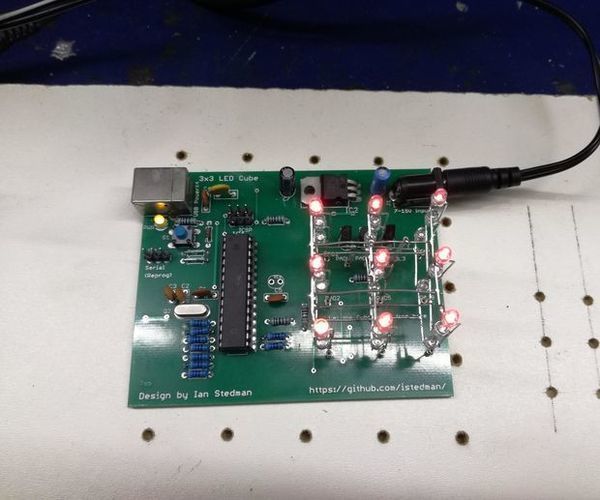
Arduino Based 3X3 Led Cube
"Hello and welcome to my first Instructable. I present a simple, neat design for a beginners 3x3x3 LED cube. To make it easier to build, I provide details of acustom PCB, you can make yourself or buy, instructions and you can, like me, re-use the software from this great Arduino library LED cube and arduino lib. One of the design aims was to only use through hole parts, they are easier for the beginner to solder and everything is readily available via the internet on your favourite auction/shopping sites. The design can be powered from a USB cable or a 7.5-12V DC power adaptor. The circuit uses a cut-down Arduino core design and you can program it in circuit using either a cheap In Circuit System Programmable (ICSP) programmer or a readily available USB to TTL adaptor." [...]
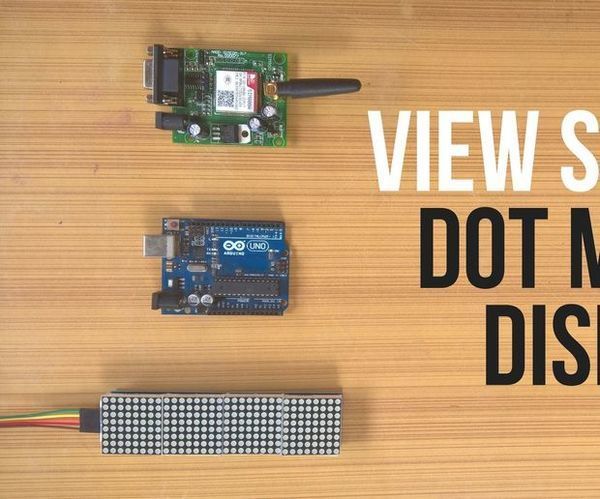
View SMS On A Dot Matrix Display
"In this video, you will learn how to use a GSM module, dot matrix display and how to display scrolling text on it. After that we will combine them together to display messages received over a GSM SIM to a dot matrix display. It is fairly easy and you can build it for your school or college projects. So without wasting any more time, let's get into it. " [...]

Build A $15 Remote Controlled Esp8266 Robot Butler / Car / Tank For Ios And Android
"Do you hate to walk to the kitchen to grap a snack? Or to get a new drink? This can all be fixed with this simple $15 remote controlled butler. In this Instructable we will be building a remote controlled butler. It can be controlled over WiFi using an Iphone or Android phone. The entire project is based on the ESP8266 nodeMCU board and everything can be build for $15 if you buy from China." [...]
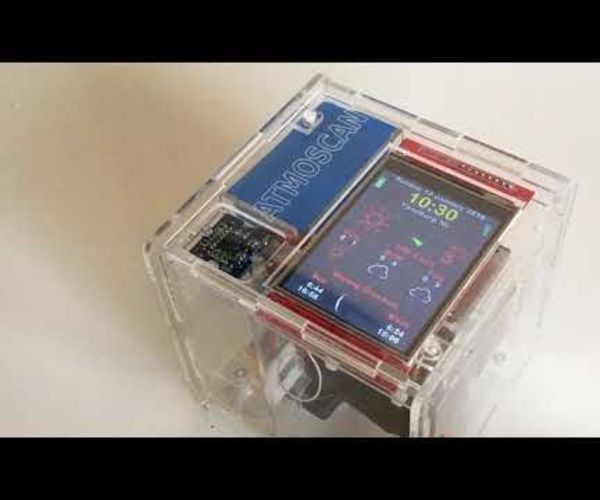
Atmoscan
"ATMOSCAN is a multisensor device aimed at monitoring indoor air quality.While many projects have been published that have similar purpose, this one is a complete system that summarises them all. It has an LCD color display, it is time & location aware, it is gesture controlled and it posts to ThingSpeak (or others) via MQTT, but can properly handle disconnected operations and reconnection. With its embedded rechargeable battery it lasts a full day when disconnected from power. It uses a a multitasking cooperative framework and is very responsive to user input while sampling sensors, handling UI, posting to MQTT. In fact it squeezes quite a bit out of the tiny ESP8266. It does so by integrating a number of open source libraries and leveraging internet web services." [...]

Arduino Home Irrigation System With A 7 Segment Display
"In this instructable we are building a home irrigation system based on an arduino uno. I know there are tons of similiar projects / tutorials already floating the web, but maybe I did something different and you can pick up an idea or two. " [...]
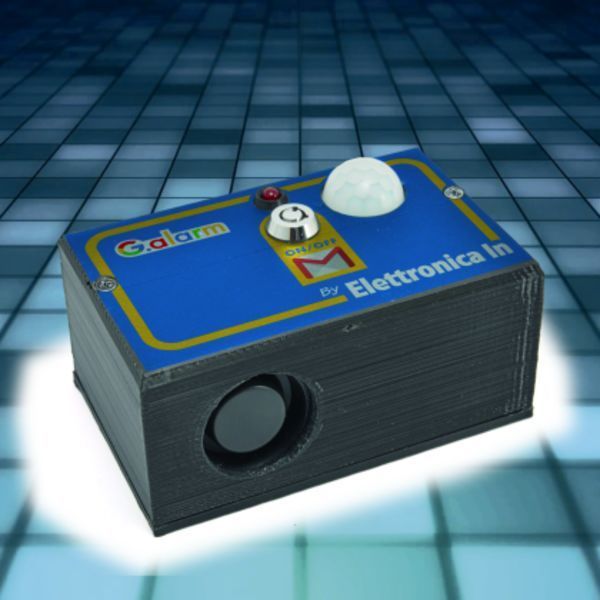
Build a Simple Presence Alarm system with email notifications
"Based on our ESP03 demoboard, this device sends out email notifications through Gmail when the onboard P.I.R. detects movement. The traditional alarm system which just makes a sound alarm go off and maybe sends out an SMS, forcing you to cash out for recharging the built-in Sim Card, is not enough for you? Have you decided to take advantage of a simple and intuitive system in order to receive access notification anywhere in the world, even your cell phone, over the Internet? Are you beginners of the Arduino and IOT word and you would like to start out with a good and exciting project that will show your friends what you can do? Well, you don’t need to worry, because we have developed an ideal project to satisfy all your needs, based on the ESP03 Wi-Fi module and operating in the security field, which we are going to describe in these pages." [...]
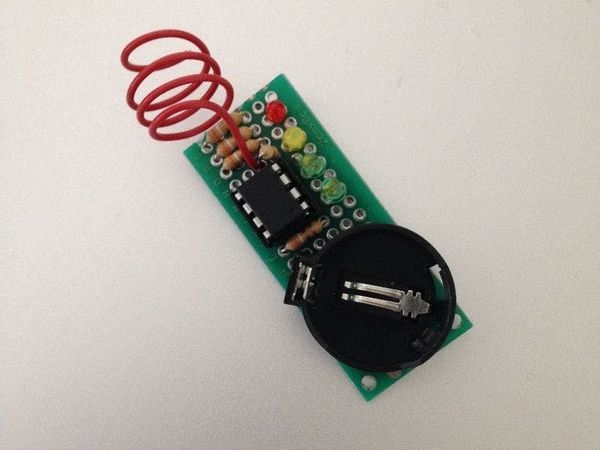
ATtiny85 EMF Detector
"This is a simple tutorial to create an EMF detector using an ATtiny85 microcontroller. This is a simple tutorial to create an EMF detector. You can use Arduino for this job, but is better use a microcontroller called ATtiny85. It is possible program it throe the Arduino interface. What is a Magnetic Field [from Wikipedia] An electromagnetic field (also EMF or EM field) is a physical field produced by electrically charged objects. It affects the behavior of charged objects in the vicinity of the field." [...]
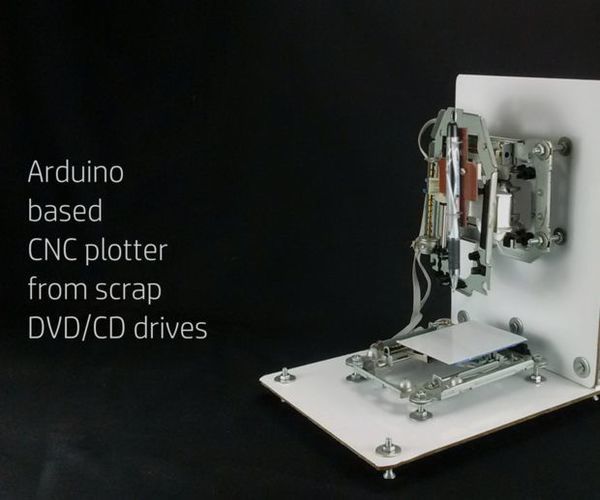
Arduino Based Cnc Plotter Made From Scrap Dvd/Cd Drives
"Indeed, the world of web has quad trillion tons of information but when you want to build anything you need all the intricate little details. There are already a number of good DIYs, Tutorials and YouTube videos on the topic but I was unable to dive into the details needed to build this project. Hence after its completion I am posting everything that is required. I will try to keep this walk through very simple and basic so that even a reader from non technical background would be able to replicate this project. What is it all About ? The idea behind it is very simple, first we select an image or text (that we want our machine to draw on a piece of paper)." [...]

Pocket-Sized Power Supply
"Here is a miniaturized adjustable power supply, it can supply from 1,2V to 16,8V. " [...]
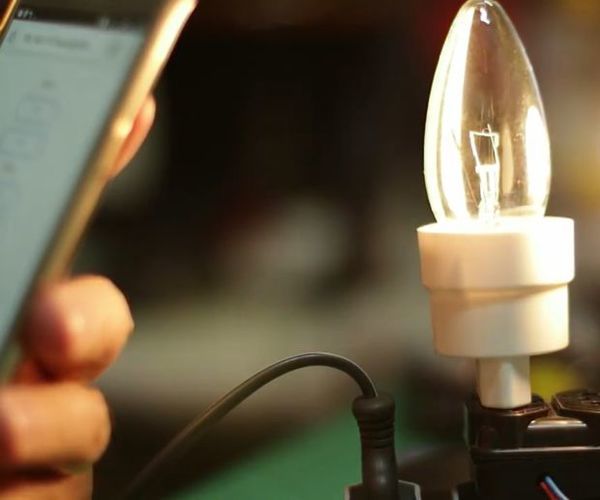
Automation With Esp8266 Using Relays
"Today, we are going to program the ESP8266 with the Arduino IDE. Let's set up a server to turn on and off the device. In this case, we are using a circuit with two relays. In this circuit, we will use the ESP8266 with Wi-Fi. We will also use the GPIO connectors, and we'll specifically show ESP01. " [...]
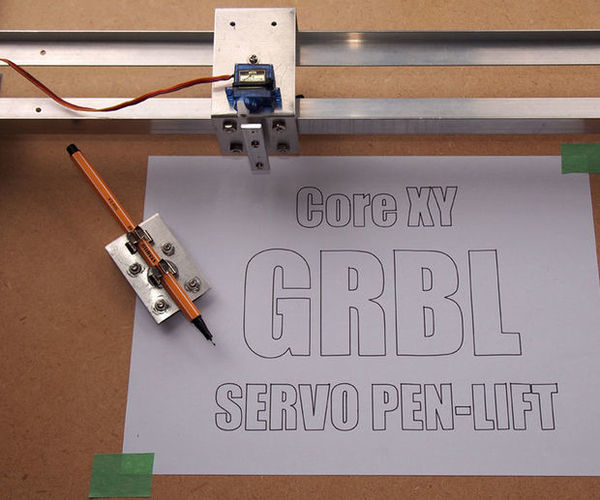
How To Control A Servo Using Grbl
"GRBL is an arduino program for controlling each of the XYZ stepping motors on 3-axis machines such as 3D-printers and milling machines. [1] If you study the predefined GRBL pin-outs in photo 2 you will see that none of the PWM (pulse width modulation) pins are available for controlling a servo. This instructable explains how to: free up a PWM servo pin by modifying GRBLversion 1.1f, configure GRBL for coreXY plotters, create a g-code calibration file using Inkscape 0.92, insert the necessary pen-lift control codes using “GcodePostProcessor” [2], configure your plotter settings and send the modified g-code to your plotter. The opening photo shows the results obtained when I ported GRBL to the CoreXY plotter described in https://www.instructables.com/id/CoreXY-CNC-Plott... The video shows GRBL controlling a servo motor using the pen-lift code sequences generated by “GcodePostProcessor”. The solid blue line indicates when the servo arm should be up as the virtual pen traverses the letters ABC." [...]

Arduino Based USB Paper Gesture Mouse
"I have always been pretty amazed by the Capacitive sensor library of Arduino, It makes me feel like a super human, I can make any non conductive material to act like a touch enabled controller for various use cases, So here I thought of controlling my PC with the power of Capacitive Sensors and build a mouse using an Arduino Pro Micro and some home built Capacitive Sensors and a sheet of paper, So let's start..." [...]

DIY ECG EKG Portable Heart Monitor
"Trying to capture a trace of my very occasional heart palpitation has proven to be nearly impossible. Being keen on electronics, I thought I would make my own ECG (ElectroCardioGram) monitor. This is intended to be a fun project, not a replacement for a proper ECG. A hospital ECG will likely be a "12 lead" monitor (which actually only has 10 leads due to sharing). This monitor has just two leads, which are placed over bony areas of the chest (sternum and lower-left rib). The project was fun - circuit design, PCB manufacture, Arduino coding, datalogging, LCD screen, 3D printing, data analysis, etc." [...]

Tinyd, 8-Bit Stereo Class D Amp From Attiny85
"The goal of this project is to create an 8-bit 32khz class d amplifier, using filterless topology, controlled by an Attiny85 The goal of this project is to create an 8-bit 32khz stereo class d amplifier controlled by an Attiny85. I built a similar model back in 2014 based off the ATtiny461. This new version will be ported to the more popular ATtiny85. I changed the scope of this project due to time constraints. My original intent was to have the class d output 0% pwm at rest, but it will now output 50% pwm at rest. Perhaps I will revisit this project in the future to address." [...]
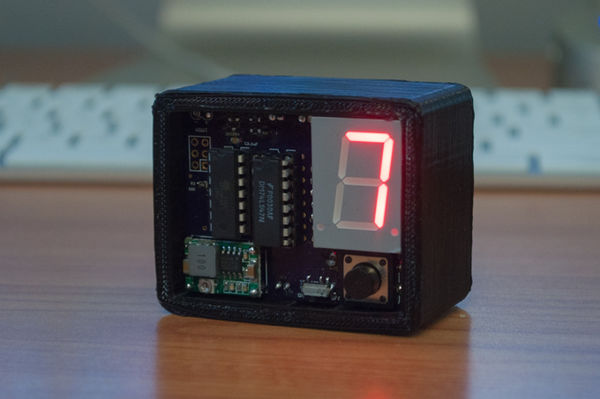
ATtiny84 Thing
"I have a whole tray of these 7-segment displays that I pulled out of boards at work that someone threw in the garbage. I've had them for well over 10 years. Every now and then, one comes in handy. I was bored while I waited for parts for my IN-18 Nixie Clock to arrive from China. I wanted to throw together a silly little ATtiny thing that could use a 7-segment display to display a random number from 0-9. Nothing fancy, just a silly little one-day project." [...]
That's all Folks!


